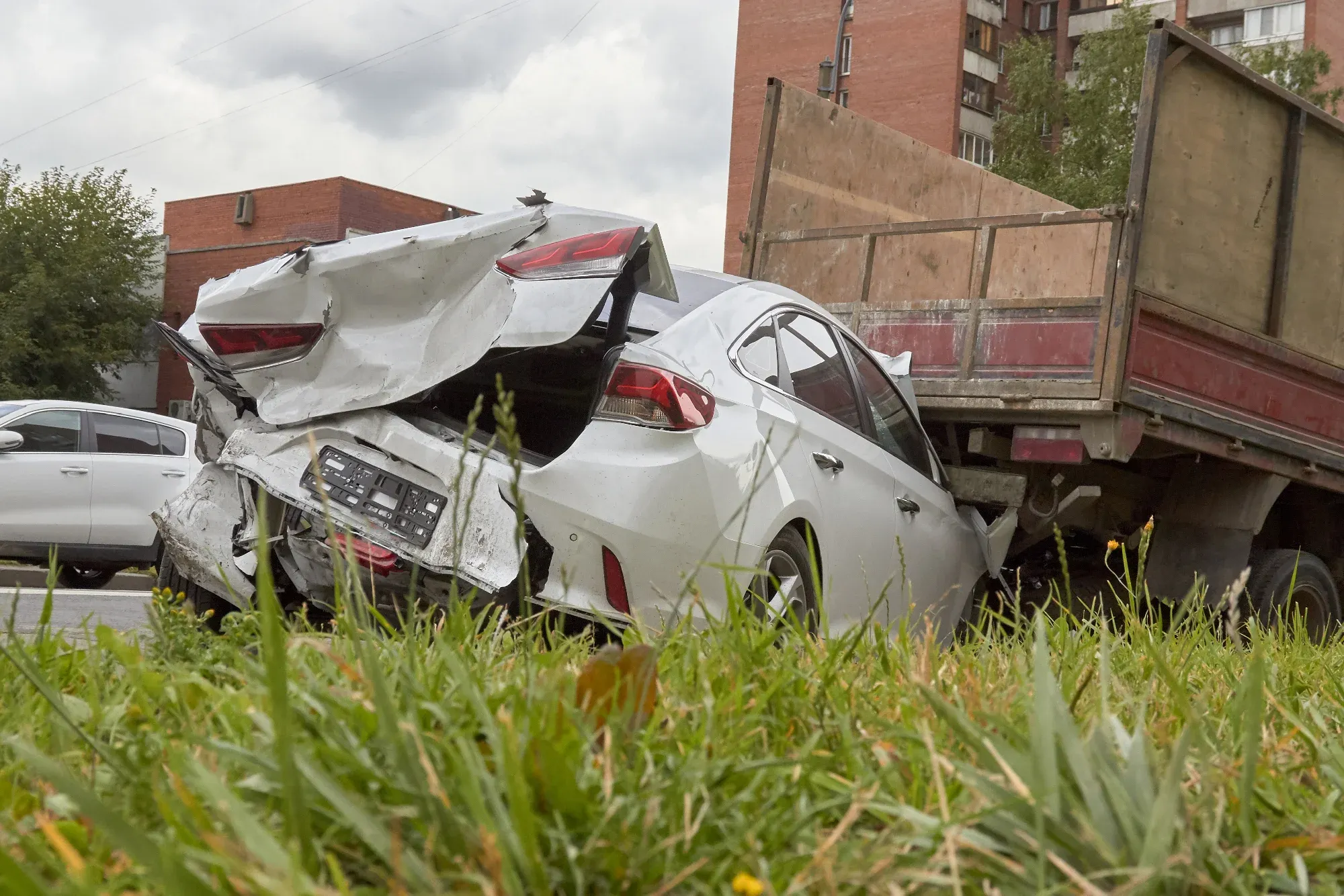table of contents
If you’ve been injured in an accident, you may wonder how California values your pain and suffering. Unlike out-of-pocket costs, pain and suffering damages are harder to quantify. In California personal injury cases, compensation is divided into two broad categories. Before diving into how to calculate pain and suffering in California, it’s important to understand the difference between economic and non-economic losses.
Economic vs. non-economic damages:
After an injury, your economic damages cover tangible financial losses like medical bills and lost wages. These costs are straightforward to add up with receipts or pay stubs. On the other hand, non-economic damages compensate you for intangible losses that don’t have a direct price tag. This includes distress (mental anguish), scarring, and pain and suffering caused by the accident. Non-economic damages are sometimes called “general vs special damages”, with general referring to subjective harm like pain, and special referring to specific monetary costs. In short, damages for pain and suffering are a form of non-economic compensation meant to address the real impact of an injury on your life beyond the bills.
How to Calculate Pain and Suffering in California
When it comes to pain and suffering calculation, California law does not use a fixed formula. Instead, courts and insurers rely on common methods to estimate a reasonable amount. The most common approach is the multiplier method (1–5x). This method starts by calculating personal injury damages for all your economic losses – adding up your medical expenses, property damage, and lost income. Then, that sum is multiplied by a factor typically ranging from about 1.5 up to 5, depending on the severity of your suffering.
For example, if your economic losses are $20,000 and your injuries caused significant long-term pain, a multiplier of 3 would suggest ~$60,000 in pain and suffering damages. A minor injury with quick recovery might use a lower multiplier like 1.5, whereas catastrophic injuries can merit multipliers on the higher end (4 or 5, or even more in rare cases).
Another way to figure pain and suffering is the Per Diem (daily) method. This involves assigning a daily dollar value to your suffering (for instance, an amount equivalent to a day’s wages or a reasonable daily cost of pain) and then multiplying that by the number of days you endure the pain.
For example, if you assign $100 per day and you significantly suffered for 100 days, the pain and suffering calculation would come out to $10,000. In practice, insurance adjusters rarely use the per diem method for settlements.
It can be useful, though, for illustrating to a jury or negotiator what a day in your life with pain is worth. Ultimately, whether using a multiplier or per diem, any method is just an approximation – California instructs juries that there is no precise formula and that such awards should be “reasonable” based on the evidence and common sense.
How to Figure Pain and Suffering in California
Calculating pain and suffering isn’t an exact science, but there are steps you can take to figure out a fair amount for your claim:
- Keep a pain journal and save records of your emotional distress. Note how the seriousness of injury affects your daily life – e.g. sleepless nights, missed family activities, or depression. These details help justify a higher value.
- First, calculate your medical costs, therapy bills, medications, and lost income from work. This provides a baseline. Pain and suffering is often proportional to these special damages (although not strictly limited by them).
- Evaluate the seriousness of injury and future prognosis. Long-term or permanent injuries (like chronic pain, disability, or disfigurement) warrant a larger compensation. If your doctors say you’ll face ongoing issues or a lengthy recovery (poor future outlook), pain and suffering damages should account for that future hardship.
- Use the multiplier or per diem approach as a starting point. Be honest about any comparative liability – under California’s pure comparative negligence rule, if you share some fault for the accident, your award for pain and suffering (and all damages) will be reduced by your percentage of fault. For instance, if you would be entitled to $50,000 for pain and suffering but you are 20% at fault, you might only recover $40,000 (i.e. reduced by 20%).
- It can help to look at the history of verdicts or settlements in California cases similar to yours. For example, claims adjuster evaluation tools often reference past cases to decide what is “normal” for, say, a broken leg versus a spinal injury. If juries have awarded high amounts for pain in cases like yours, it bolsters your claim. Conversely, if similar cases settled for certain ranges, that gives you a reality check.
By following these steps, you can arrive at a ballpark figure. Remember that every case is unique – two people with the same injury might not receive the same pain and suffering award, due to differences in impact on their lives or differences in proof and advocacy.
California Laws and Limits on Pain and Suffering Damages
California generally does not cap pain and suffering damages in ordinary personal injury cases. Juries are free to award any amount that is deemed reasonable for the plaintiff’s pain and suffering damages. However, there are important exceptions and legal guidelines to know:
- California historically had a strict cap of $250,000 on non-economic damages (including pain and suffering) in medical malpractice cases. This was set by the law known as MICRA in 1975. Recently, the law changed – for malpractice claims filed in 2023, the cap was raised to $350,000 for non-death cases (and $500,000 in cases involving a patient’s death). These limits will gradually increase over the next decade (eventually reaching $750,000 and $1 million, respectively). So, if your pain stems from medical negligence, California law unfortunately limits what you can recover for pain and suffering.
- If you were injured in a car accident while you were uninsured, California’s Proposition 213 bars you from recovering non-economic damages like pain and suffering from the at-fault driver (except in certain DUI cases). In other words, to claim pain and suffering after a car accident in California, you generally must have had auto insurance coverage yourself.
- As mentioned, California follows a pure comparative negligence rule. Even if you are partly to blame for your own injuries, you can still recover a portion of your damages. However, any pain and suffering damages you’re awarded will be reduced in proportion to your share of fault. A jury will determine percentages of fault for each party, and the judge will reduce the non-economic (and economic) damages accordingly.
- In wrongful death cases, California historically did not allow survivors to recover the decedent’s pain and suffering (since the injured person is deceased). But a recent change in law now permits some recovery for a decedent’s pain and suffering through a survival action, within certain time limits.
The bottom line is that outside of specific scenarios like medical malpractice or being an uninsured motorist, California has no hard ceiling on pain and suffering awards. The main legal standard is simply that the award must be “reasonable” in light of the evidence.
Pain and Suffering Calculation Examples
Because pain and suffering is subjective, outcomes can vary widely. Here are a few hypothetical examples to illustrate how calculating personal injury damages might work:
- Example 1 – Moderate Injury: Suppose you suffered a broken arm and some anxiety after a car accident. Your economic losses (medical treatment, rehab, and two weeks off work) total $10,000. This was a moderately serious injury but not life-changing. Using a multiplier of around 2 or 3, your pain and suffering damages might range roughly from $20,000 to $30,000. If you also experienced significant emotional distress (for instance, ongoing fear of driving), the higher end of that range or more could be argued. An insurance claims adjuster evaluation might start on the lower side, but with evidence of your pain and anxiety, you could justify more.
- Example 2 – Severe Injury: Now consider a more severe scenario – a traumatic brain injury from a fall, with $100,000 in medical bills and permanent effects on your quality of life. Here, a much larger multiplier (perhaps 5 or even higher) may be appropriate given the seriousness of injury. That could mean $500,000+ for pain and suffering alone, on top of economic damages. In fact, California juries have been known to award seven-figure sums purely for non-economic harm in catastrophic injury cases. The history of verdicts in such cases shows that when injuries are life-altering, pain and suffering compensation can far exceed the tangible costs.
- Example 3 – Minor Injury: Even for relatively minor injuries (say, a sprained ankle and a few days of soreness), you can recover something for pain and suffering. If your medical bills were $2,000 and you mostly recovered in a week, a low multiplier like 1.5 might justify about $3,000 for the inconvenience, pain, and any fleeting anxiety you experienced. While a small amount, it recognizes your pain and suffering as real. Many pain and suffering calculation examples in California start at a few thousand dollars for minor cases and go up into six or seven figures for the most severe cases.
These examples are not guarantees of any particular outcome but illustrate the range of possibilities. In all cases, well-documented suffering and effective advocacy tend to lead to higher settlements or verdicts.
Maximizing Pain and Suffering Compensation in California
Every injury case is different, but there are ways to strengthen your claim and potentially maximize your pain and suffering compensation:
- Because pain is subjective, evidence is crucial. Consistent medical treatment and symptom records are essential. If experiencing mental anguish such as PTSD or depression, seeing a therapist can help support your claim. Statements from friends and family about your daily life changes, along with photos of your injuries or a pain journal, can provide concrete proof of your suffering.
- Highlight any long-term effects. A poor future prognosis or ongoing pain should be documented by doctors or experts. If the injury is permanent, it justifies a higher award. Don’t settle too early – wait until the full extent of your recovery and limitations is clear.
- Insurers often offer lowball settlements. Using history of verdicts to show higher payouts can help counter a conservative claims adjuster evaluation. Be firm when offers seem unfair. Sometimes, threatening to go to trial will prompt a better offer.
- Avoid actions that weaken your claim. Don’t post about activities that contradict your injury on social media. Following doctor’s orders and not skipping treatments will help avoid accusations of exaggeration. Stay credible, and your claim’s value will be protected.
By taking these steps, you give yourself the best chance at a full and fair pain and suffering recovery. Maximizing this aspect of damages often comes down to thorough preparation and knowing the true worth of your case.
Working with a Personal Injury Attorney in California
Calculating pain and suffering compensation in California can be tough, but an experienced attorney makes a big difference. Personal injury lawyers in CA know how to present a strong case for intangible losses, gather evidence, hire experts, and counter insurance tactics. They ensure your claim is valued accurately, factoring in medical reports and injury severity, while navigating legal limits and exceptions.
Without representation, insurance companies often offer low settlements, knowing unrepresented claimants struggle to assess fair compensation. With an attorney, you’re more likely to secure a fair settlement, and if necessary, they’ll take the case to trial.
At Kermani LLP, our experienced personal injury lawyers are skilled at using the multiplier method, telling your story, and negotiating with insurers for maximum compensation. Let us handle the legal details while you focus on recovery.
Discover your legal options. Get a free case review, and pay nothing unless we win.
Receive a FREE case assessment
Every case is unique, so we tailor our approach to meet your specific needs.











